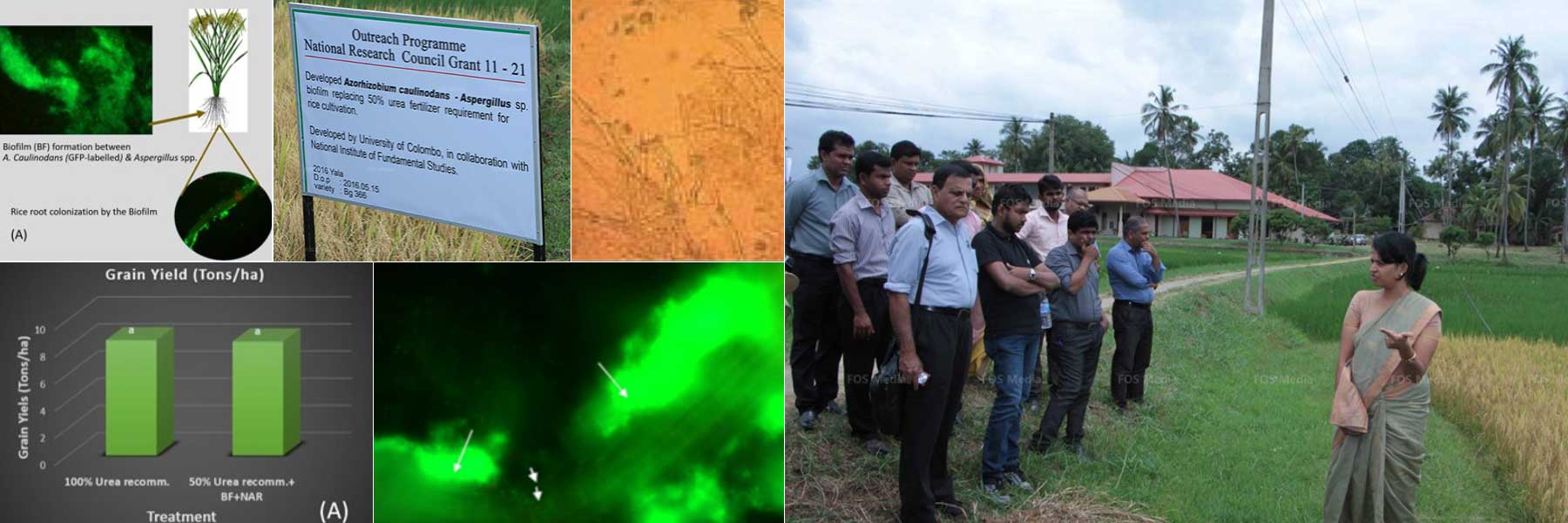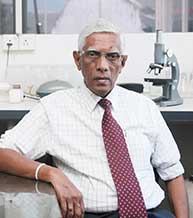
A microbial bio-fertilizer to replace 50% urea usage in rice

Rice is a staple food for more than half of the world’s population. To obtain required rice yields sufficient to feed the increasing world population, with the challenge of decreasing arable lands, increased productivity needs to be aimed at. Specified amounts of inorganic fertilizers containing three major nutrients N, P, K are therefore being added to improve rice plant productivity or to obtain higher yields. Out of the three nutrients, nitrogen is termed as the “absolute necessity” for rice cultivation as it has a direct, positive impact on the growth and yield of rice. So much so that, if less than required amounts of nitrogen fertilizer (urea) is added, it leads to great yield losses. But on the other hand, excessive amount of nitrogen fertilizers usage can lead to many economic, environmental and health problems. When Sri Lanka is considered, the money spent on importation of urea as well as the money spent on urea subsidies has affected the economy adversely. Even though farmers add excessive amounts of nitrogen fertilizer expecting higher yields, only 30% of added fertilizers are taken up by the plants and the rest is lost from the rice ecosystem through leaching, volatilization and denitrification. The nitrogen thus enters the ecosystem and can lead to many hazardous consequences such as Methemoglobinemia (Blue baby syndrome) in infants, cancers due to secondary amines, respiratory illnesses due to NO–3, aerosols, NO–2 and HNO3, eutrophication of water bodies, ozone layer depletion through greenhouse gas emissions etc.
Even though the incorporation of chemical inputs provides a quick supply of nutrients to the plants, it can negatively affect the soil microbial communities. Nitrogen fixer suppression by inorganic nitrogen fertilizers and reduction of microbial diversity in soil has been documented. In turn this negatively affects the agro-biodiversity and soil fertility that threaten sustainability.
Due to all of the above mentioned problems associated with inorganic nitrogen fertilizer, finding an alternative became a highest priority, and is evident from the global attention the issue has received during the past decade. Considering all of the above facts, the main objective of this research was to develop a dependable, eco-friendly bio-fertilizer that can substitute urea fertilizer while providing expected rice growth and yield.
The main organism tested for this research was the bacterium Azorhizobium caulinodans. This bacterium was specifically chosen for the project because it possessed many uniquely beneficial characteristics. Mainly, the most beneficial was this bacterium’s ability to live freely in the soil and use freely available N2 from atmosphere and convert it into the forms that can be utilised by plants (N-fixation).

Prof. T. L. Shamala Tirimanne
Department of Plant Sciences
Faculty of Science, University of Colombo

Prof. Gamini Seneviratne
National Institute of Fundamental Studies
Sri Lanka

Prof. Ananda Kulasooriya
National Institute of Fundamental Studies
Sri Lanka

Dr. Thilini A Perera
Department of Plant Sciences
Faculty of Science, University of Colombo






